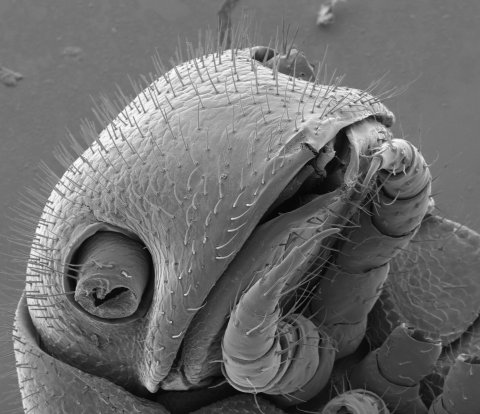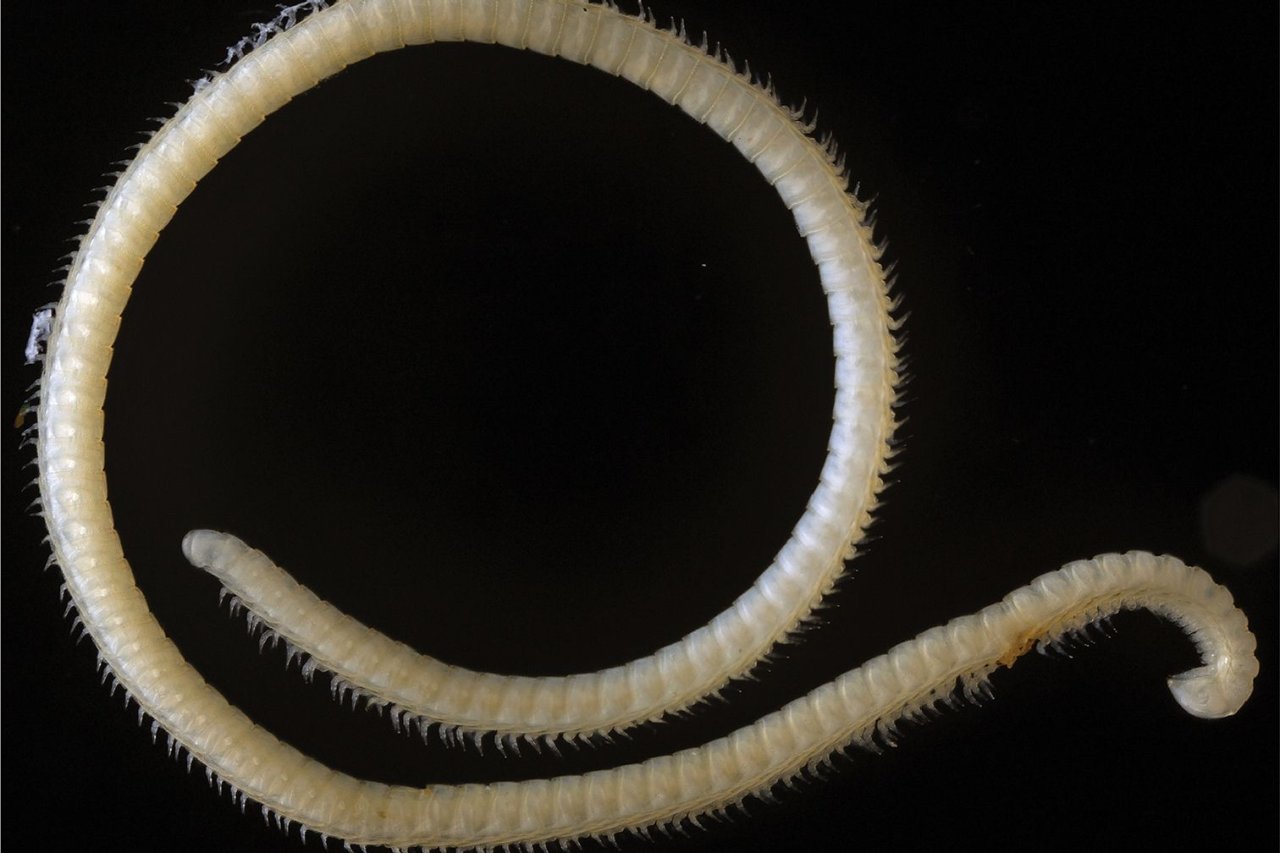Researchers have discovered a well-heeled new millipede species in a cave in central California's Sequoia National Park. The millipede has 414 legs—making it one of the leggiest creatures on Earth. It also boasts 200 poison glands and four gonopods, the millipede equivalents of penises.
Jean Krejca, a cave biologist, found a single male of the species under a rock in Lange Cave, an isolated spot within the park, in 2006. She immediately sensed that it was something special, she says, "because it was so long and so thin, and not something I'd seen before." Of course, "long" is relative—it's just under an inch and as thin as a thread of yarn. To identify it, she sent the specimen to millipede expert Bill Shear at Hampden-Sydney College, who shared it with Paul Marek at Virginia Tech.
Scientists like to have multiple specimens when describing an unknown creature, so the researchers returned to the area three times over the next few years to search for more examples of the species, says Krejca, who in addition to being a biologist is president of Zara Environmental, a consulting company based outside Austin, Texas. But they couldn't find any, so they eventually decided to formally describe the single specimen in a study published October 20 in the journal ZooKeys.
Like most other millipedes, this species feeds on decaying organic material or fungus and uses its poison glands to defend itself from predators. It has two pairs of legs on almost every bodily segment. One weird thing about this species is that it's covered in hairs that secrete a mucous silk, also likely for defense, Marek says.
Its penises, or gonopods, are also unique, he adds. The front pair "act like a shoe wedge" for opening up the female's genitalia, while the back pair deposit the sperm, Marek says.
The species—dubbed Illacme tobini, after cave geologist Ben Tobin of the National Park Service, who co-discovered the creature—is undoubtedly rare. Rowland Shelley, an adjunct professor at the University of Tennessee, Knoxville, who wasn't involved in the work, says he has looked for millipedes in this area multiple times and hasn't seen any. "It's remarkable that nobody found this" previously, he says.

The new millipede is the second species in the genus Illacme. (Genus is the biological classification above species.) The other, I. plenipes, has 750 legs—the most of any animal. It lives under sandstone boulders in San Benito County, about 150 miles away, and was discovered in 1928.
These creatures likely spend most of their time in gaps between rocks underground, a habitat that's very hard for humans to explore, says Krejca. She says it's likely that the specimen she found had wandered up into the cave, which was probably not its primary habitat.
Millipedes grow longer as they age, producing more bodily segments, each with four legs. "But how long do they get? Where's the limit? We don't know," Shelley says. "We [hardly] know anything about them."
Shelley marvels at how such an animal gets around. "Have you ever tripped and fallen with just two legs? Imagine having 414," he says. If any of the legs aren't carefully maneuvered along with all the others, chaos ensues. "They must have an intricately developed neuromuscular system," he says. "They have to work in harmony for that animal to do anything."



















